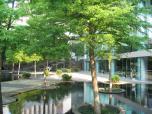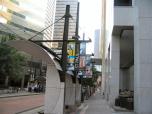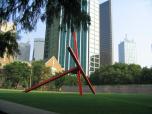




I had the privilege of receiving a book from Lawan Glasscock of Park Cities Presbyterian Church when I conducted an interview with her for my March journal. Art and the Bible, one of the books she gave me, was written by the famous Francis Schaeffer, a prolific Christian intellectual of the mid-twentieth century and founder of LaBri where people go to study any topic related to Christianity and life.
This book is divided into two main sections. One is Art in the Bible which describes how one who reads Scripture will find all of the arts represented from sculpture to paintings and tapestries, to architecture, to poetry, to music, to drama, to dance. The other is entitled Some Perspectives on Art which discusses the value of a particular piece of art…
In this article, which will be one of a series of articles, I am going to focus on Solomon's temple which is mentioned in the first part of the book discussing its structure as a work of art and looking specifically at the standards of judgment applied to the temple’s artistry and how that temple impacted life around it. This particular article will list the fourteen points that I will cover in subsequent articles.
1. How was the temple itself representative as a work of religious art? – The structure and majesty of the building itself was a testimony to all of Israel and to the surrounding nations of that era of God’s overwhelming power and authority.
2. How was the temple not a “graven image” but simply a functional building? – For one thing, God gave instructions on how the building was to be constructed. It was to be very beautiful but it was meant to be constructed to exhibit His glory. It was not to be constructed as David or Solomon saw fit.
3. How did the temple as a work of art have value in and of itself? – The beauty outside and inside of the temple was so great and representative of the finest materials Israel could gather. The building exuded quality, soundness of construction and permanence.
4. The Temple has value as a creation because man is made in the image of God and therefore man has the capacity to create – God gave David and Samuel instructions on how to construct the temple.
5. The Temple added strength to the world view to the supremacy of God.
6. In the architecture and construction of the Temple it makes a tremendous difference that there is a continuity with the normal understanding of architecture and the way it has been used.
7. Although the fact exists that although something is a work of art that does not necessarily make it sacred, the Temple was a work of art and sacred as well.
8. Four standards of judgment can be applied to the artistry of the Temple. They are: its technical excellence, its validity, its content, and the integration of that content with the vehicle.
9. Art can be used for any type of message. (Good or Bad)
10. Styles of art form change and that is okay. (There was plenty of Old Testament artistry before the Temple.
11. The Temple was designed for the context of that particular day as well as to be a representation into the future. Modern art forms and the Christian message – (There is no such thing as a godly or ungodly style.)
12. The Christian world view can be divided into a major and a minor theme.
13. The Temple itself shows that Christian art is by no means always religious art.
14. The Individual Art work and the body of an artist’s work – (We cannot judge all of an artist’s work on just one piece.
Temple Fruit Diaries
Posted: May 1, 2012 by Chuck DeShazo
